Why not try Japanese mixed rice, which offers a simple yet rich umami flavor? Takikomi Gohan, seasoned with traditional Japanese flavors and infused with the essence of various ingredients, is perfect for those who want to enjoy rice with an authentic Japanese taste.

Jump to:
What is Takikomi Gohan?
Takikomi Gohan is a dish made by cooking rice with various ingredients and traditional Japanese seasonings. "Takikomi" means to cook together, and "Gohan" refers to cooked rice. In Japan, it is known by different names depending on the region, such as gomoku gohan, which means that the cooked rice contains various ingredients, and kayaku gohan, which also refers to mixed rice. Despite the different names, they all refer to takikomi gohan.
One characteristic of this dish is that cooking the rice and ingredients together allows all the flavors of the ingredients to be absorbed into the rice. It provides a unique experience, as if the rice and side dishes are being enjoyed at the same time, and it tastes great even when cold, making it perfect for bento (lunch boxes) and onigiri (rice balls). Be sure to give this Japanese dish a try and enjoy the flavorful combination.

Typical ingredients and their roles
Takikomi gohan typically includes ingredients such as meat, mushrooms, aburaage (fried tofu pouches), and vegetables. Each of these ingredients plays a role in the dish, as follows:
• Meat
Meat is rich in umami components, particularly inosinic acid. When added to the dish, this umami flavor spreads throughout, enhancing the overall taste. Chicken thighs are the most commonly used, but pork, beef, or seafood can also be great alternatives. I personally recommend using pork belly for its rich flavor.
• Mushrooms
Mushrooms are abundant in guanylic acid, another umami component. Similar to meat, this umami component enhances the overall flavor of the dish while also adding a pleasant texture. Combining two or more umami components is known to enhance each one through a synergistic effect, which makes the dish even more delicious. For this reason, mushrooms are considered essential ingredients in takikomi gohan.
There are various types of mushrooms, but shimeji mushrooms are the most popular choice for this dish. While other mushrooms like shiitake or maitake can be used, shimeji mushrooms are still recommended for their unique texture. If you can find them in your area, be sure to give them a try.
• Aburaage (fried tofu pouches)
Aburaage adds a distinctive flavor and richness to the dish. While it is not strictly necessary, adding it enhances the depth of flavor.
• Vegetables
Common vegetables include carrots, gobo (burdock root), konjac, and snow peas. Seasonal vegetables can also be used. They contribute color, texture, and nutrients to the dish. However, I find that gobo and konjac are not often used in busy modern households, as both require some preparation.
To sauté or not
Takikomi gohan is prepared by cooking rice together with other ingredients. Therefore, there is generally no need to sauté the ingredients first, but if you are using pork belly, I highly recommend adding a sautéing step. Cooking the pork belly enhances its flavor and removes excess fat.
In this recipe, I use pork belly, so I include the sautéing step. Even if you have made takikomi gohan before, I encourage you to try this recipe with the specific ingredients and steps. The rich, deep flavors of the pork belly are sure to impress you.
Cooking tools
The tool you need to make this dish is the same as the one used to cook regular Japanese rice: a pot or a rice cooker.
In Japan, while most households have a rice cooker, it is less common outside of Japan, so I’m sharing a recipe using a pot here. Of course, you can also use a rice cooker; in that case, simply replace the pot with the rice cooker in the recipe.
To learn more about How to Cook Japanese Rice on the Stove, please refer to the linked page.

📋Step-by-step recipe
Ingredients
- ¾ cup Japanese short-grain rice (1 rice cooker cup for 2 servings)
- ⅚ cup dashi stock (Please refer to the linked page for instructions on how to make it. For plant-based options, see the pages on Kombu Dashi and Shiitake Dashi.)
- 0.5 oz aburaage (fried tofu pouches)
- 2.6 oz thinly sliced pork belly
- a pinch of salt (for the pork belly)
- 0.9 oz carrot
- 1.8 oz shimeji mushrooms (they can be substituted with other types of mushrooms)
Seasonings:
- 1 Tbsp mirin
- ¼ tsp salt
- 1 Tbsp soy sauce
Instructions
🕒 Total: 1 hr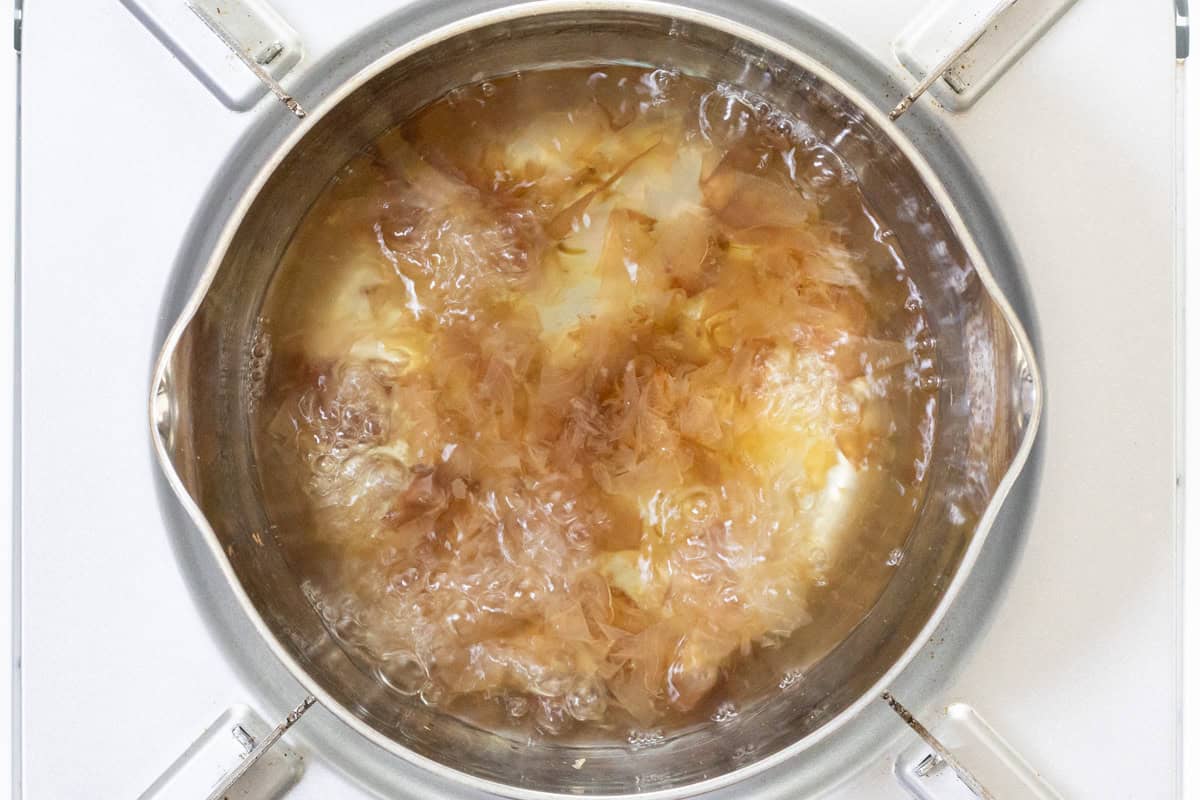
Step 1
Place a sieve over a bowl, add rice, and rinse it with water. Repeat this process several times, changing the water each time.
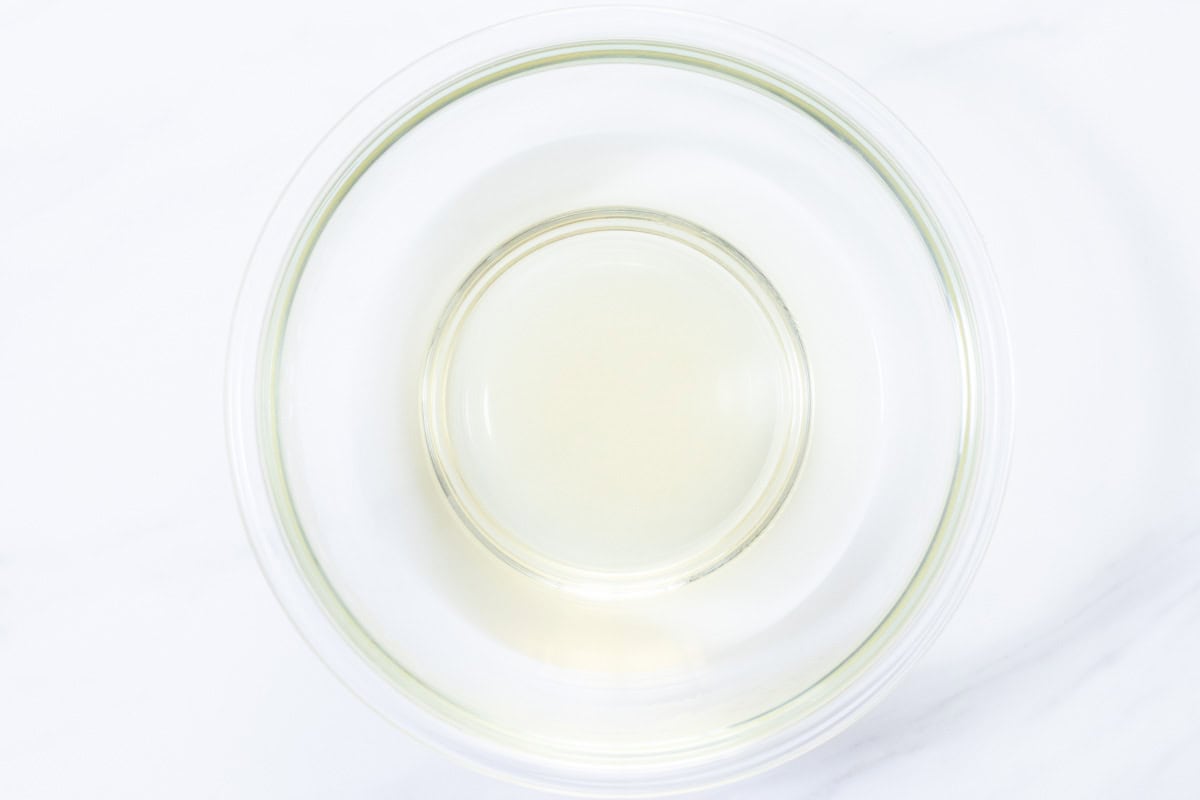
Step 2
Soak the rinsed rice in dashi stock in a pot for at least 30 minutes.
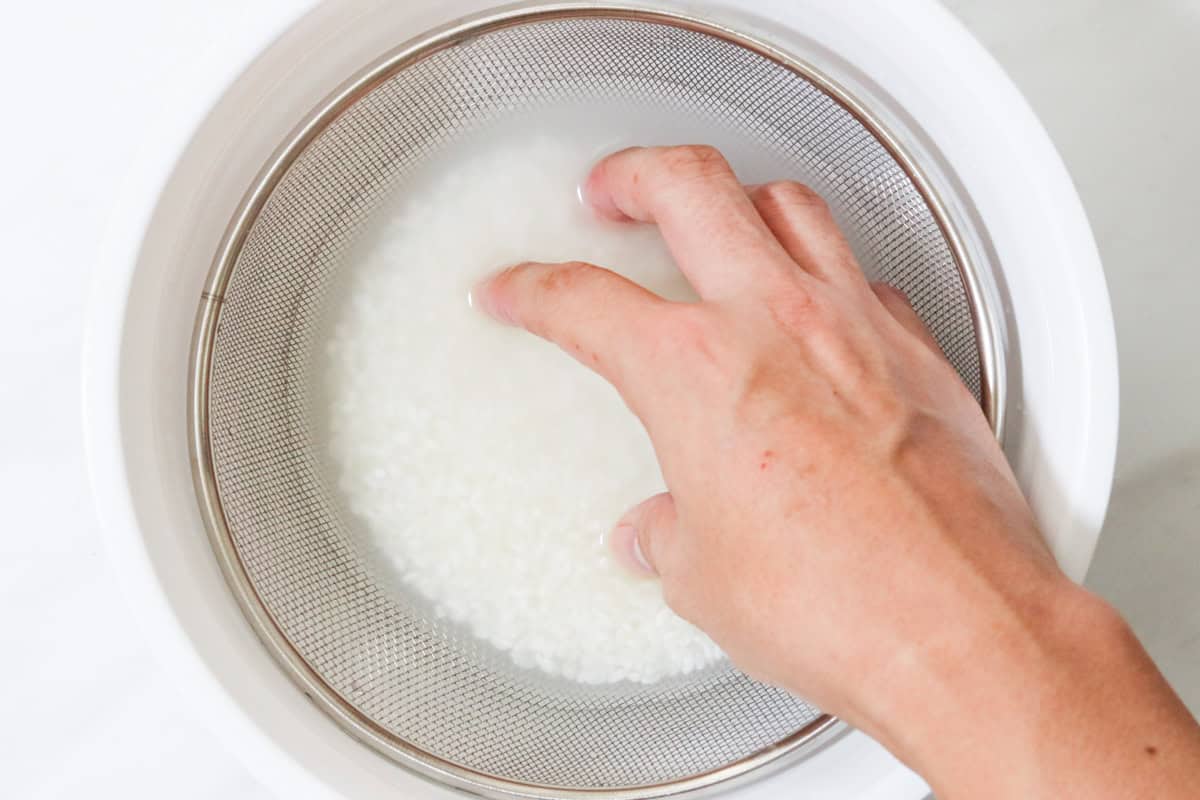
Step 3
Place the aburaage in a heatproof bowl and pour boiling water over it to remove any excess oil. Remove it from the bowl, and once it has cooled enough to handle, gently squeeze out any remaining moisture.
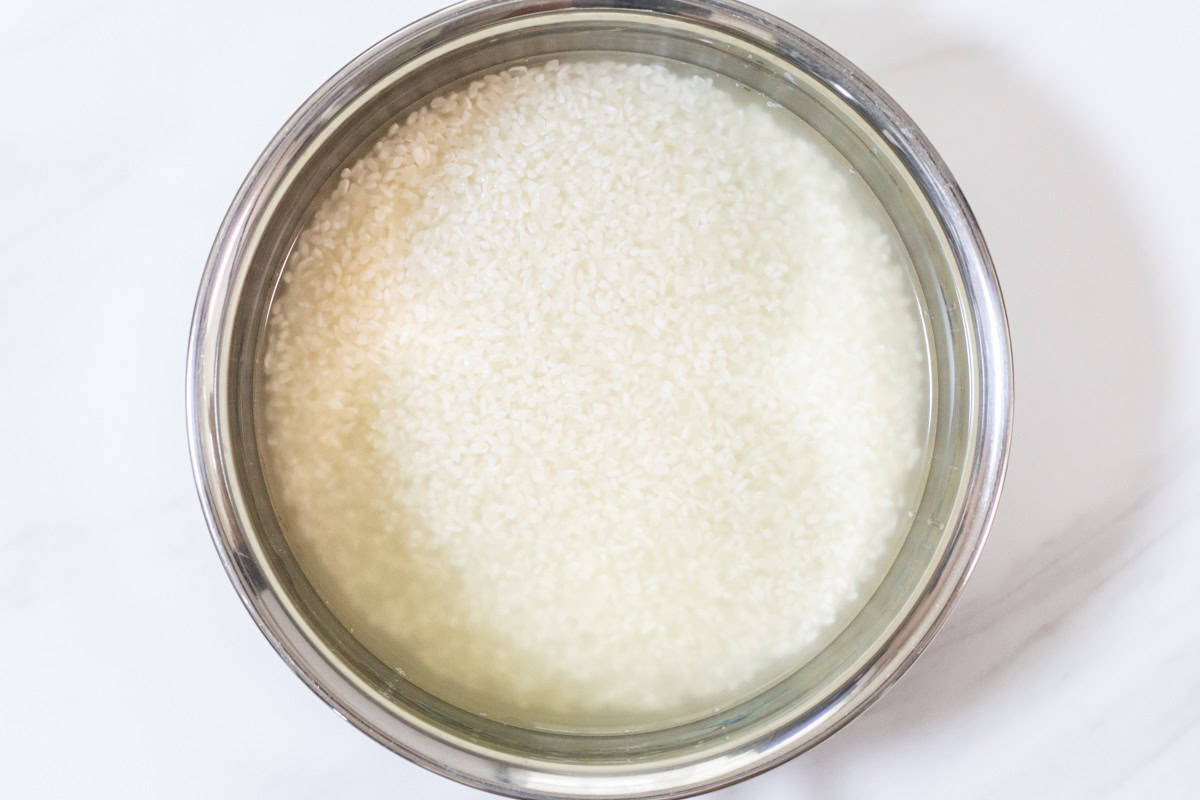
Step 4
Cut the aburaage, pork belly, and carrots into small, bite-sized pieces. Trim off the base of the shimeji mushrooms and separate them into individual pieces.
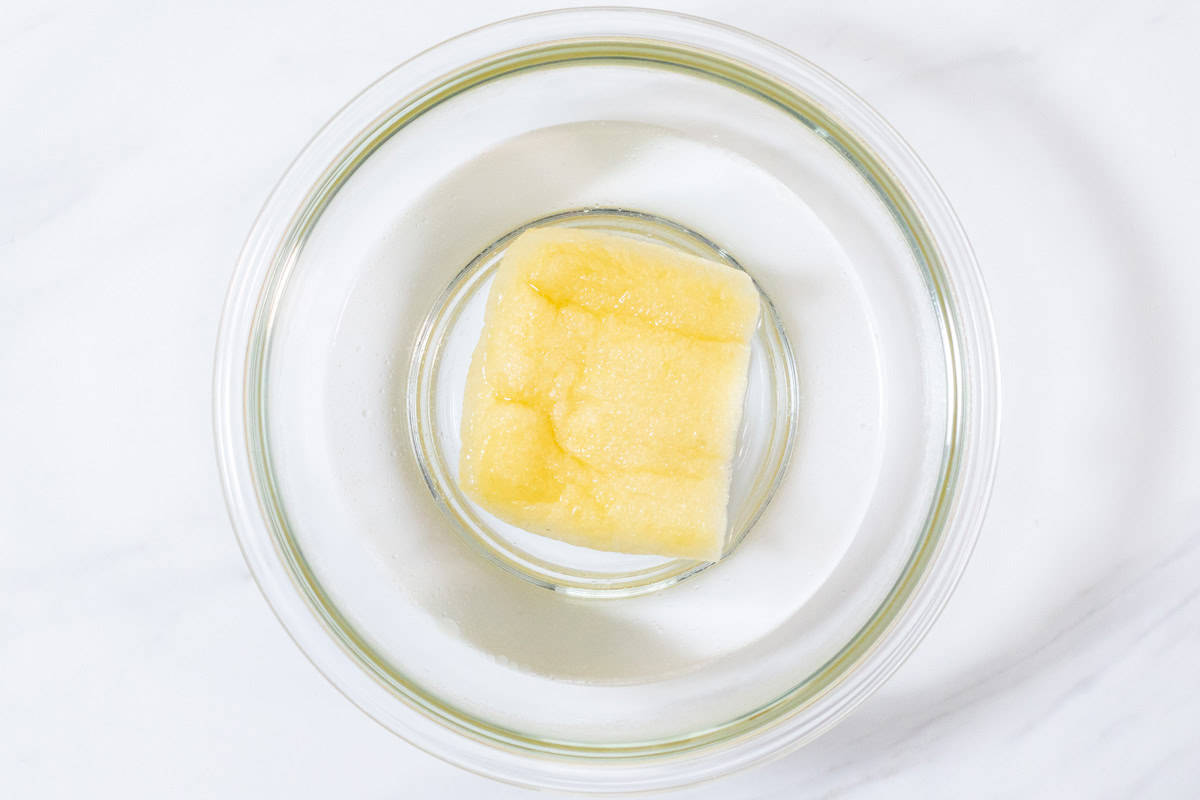
Step 5
Sprinkle the pork with salt, then sauté it in a pan over medium heat until cooked through.
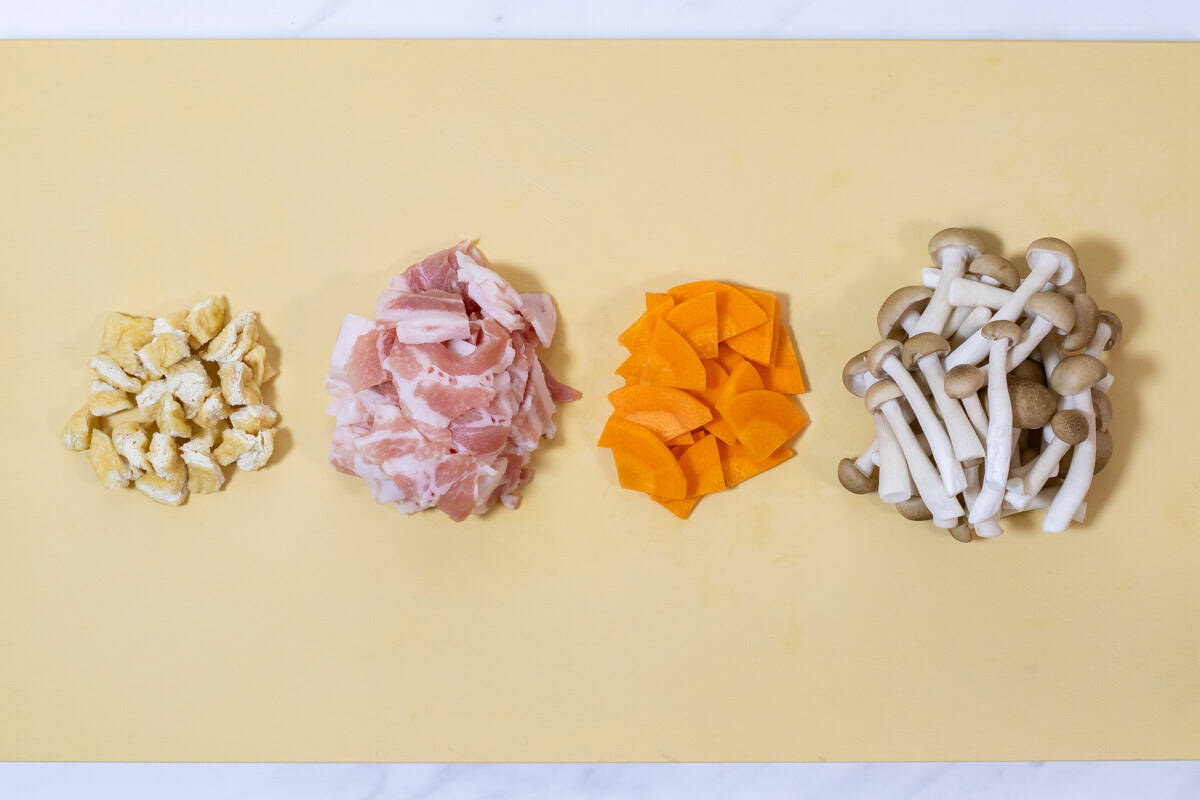
Step 6
Combine the seasonings (mirin, salt, and soy sauce) with the rice in the pot. Then, evenly distribute the aburaage, pork belly (including pork fat from the pan), carrots, and shimeji mushrooms on top.
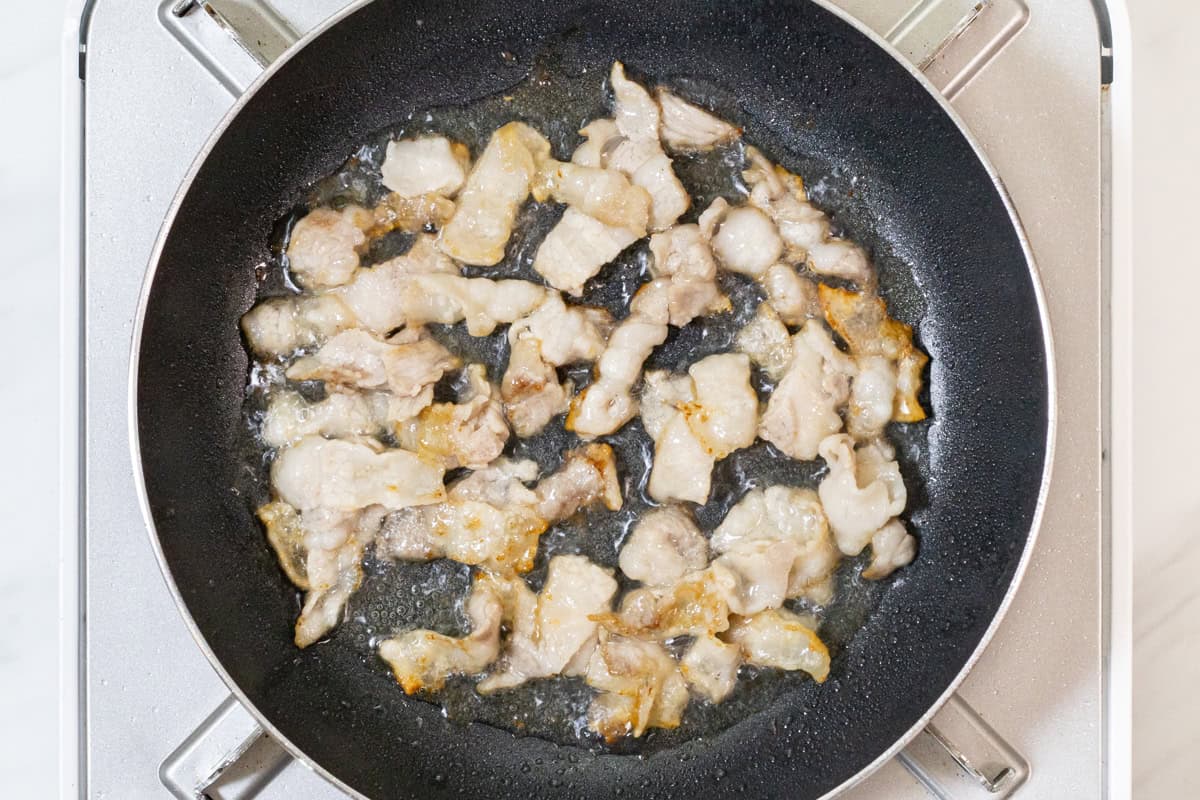
Step 7
Cover the pot and bring it to a boil. Once boiling, reduce the heat to low and cook for 10 minutes, or slightly longer for larger quantities (11 minutes for 4 servings, 12 minutes for 6 servings).
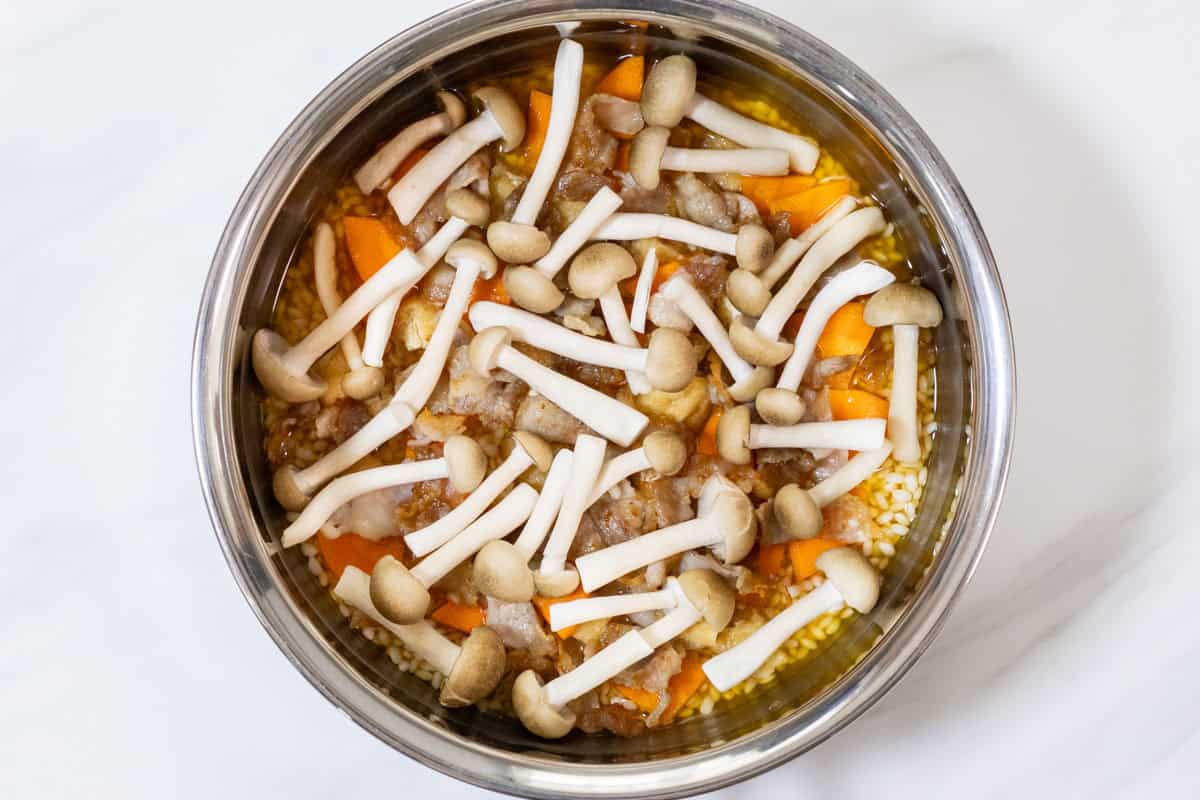
Step 8
Turn off the heat and let it steam for 10 minutes with the lid still on.
To store
You can store it in the refrigerator for up to 2 days.
Cooking tips
Do not mix the rice with other ingredients before cooking. Mixing them beforehand can prevent the rice from cooking evenly, which may result in soggy rice or undercooked ingredients.

If you try this recipe, I’d love to hear what you think. Please consider leaving a review and star rating in the comments below. If you enjoyed it, I’d really appreciate it if you shared it with your friends.
More mixed rice recipes you'll love
Recipe card

Takikomi Gohan (Japanese Savory Mixed Rice)
Ingredients
- ¾ cup Japanese short-grain rice (1 rice cooker cup for 2 servings)
- ⅚ cup dashi stock (Please refer to the linked page for instructions on how to make it. For plant-based options, see the pages on Kombu Dashi and Shiitake Dashi.)
- 0.5 oz aburaage (fried tofu pouches)
- 2.6 oz thinly sliced pork belly
- a pinch of salt (for the pork belly)
- 0.9 oz carrot
- 1.8 oz shimeji mushrooms (they can be substituted with other types of mushrooms)
Seasonings:
- 1 Tbsp mirin
- ¼ tsp salt
- 1 Tbsp soy sauce
Instructions
- Place a sieve over a bowl, add rice, and rinse it with water. Repeat this process several times, changing the water each time.
- Soak the rinsed rice in dashi stock in a pot for at least 30 minutes.
- Place the aburaage in a heatproof bowl and pour boiling water over it to remove any excess oil. Remove it from the bowl, and once it has cooled enough to handle, gently squeeze out any remaining moisture.
- Cut the aburaage, pork belly, and carrots into small, bite-sized pieces. Trim off the base of the shimeji mushrooms and separate them into individual pieces.
- Sprinkle the pork with salt, then sauté it in a pan over medium heat until cooked through.
- Combine the seasonings (mirin, salt, and soy sauce) with the rice in the pot. Then, evenly distribute the aburaage, pork belly (including pork fat from the pan), carrots, and shimeji mushrooms on top.
- Cover the pot and bring it to a boil. Once boiling, reduce the heat to low and cook for 10 minutes, or slightly longer for larger quantities (11 minutes for 4 servings, 12 minutes for 6 servings).
- Turn off the heat and let it steam for 10 minutes with the lid still on.
Notes
- If you already have bonito dashi or another type of dashi, start from step 3. In that case, use ⅚ cup (200 ml) of your dashi for 2 servings.
- You can store it in the refrigerator for up to 2 days.

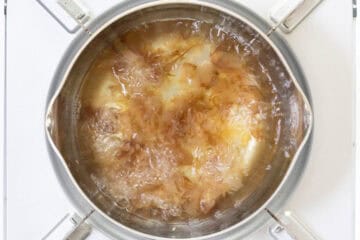
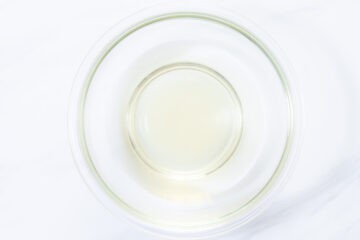

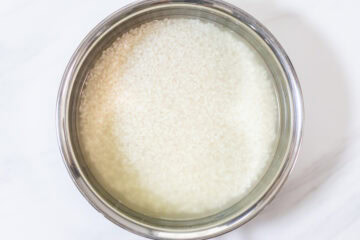
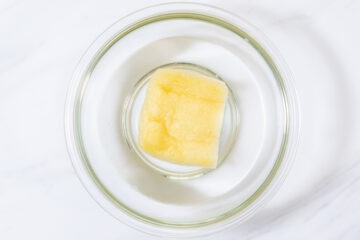
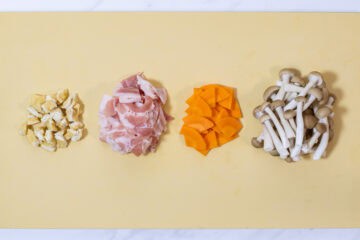




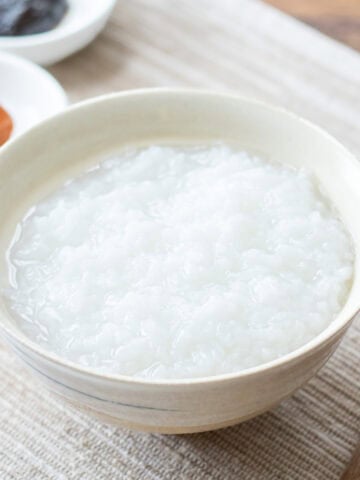

Leave a Rating and a Comment